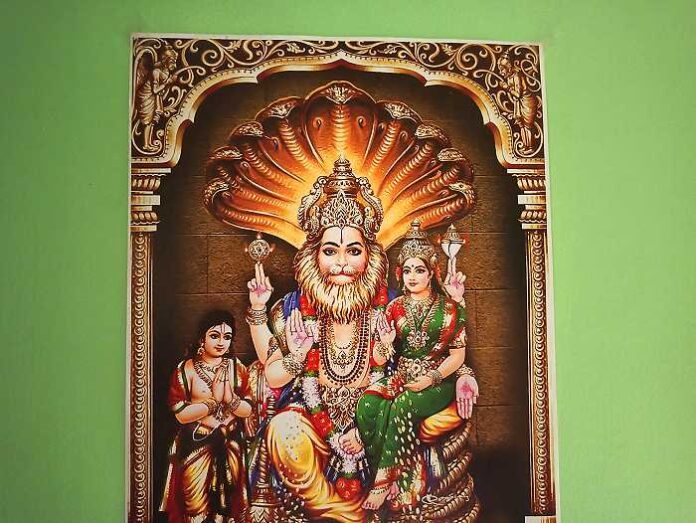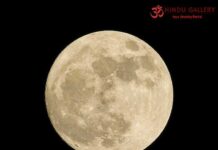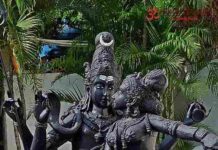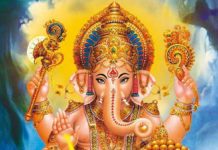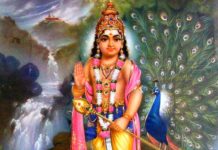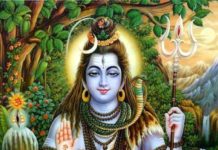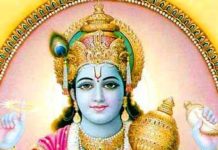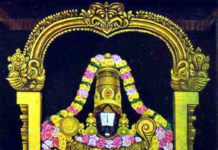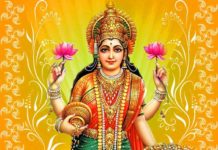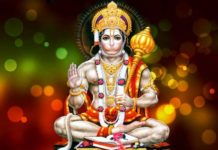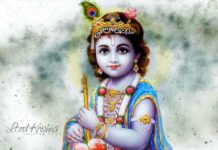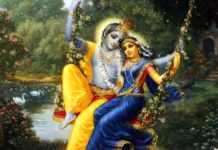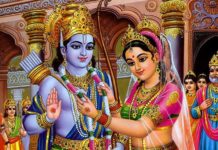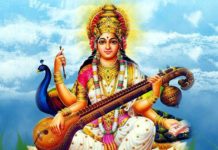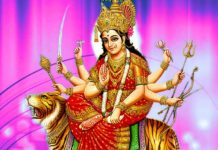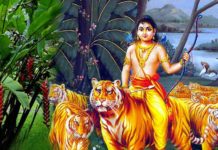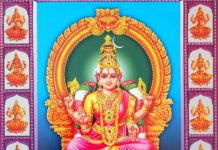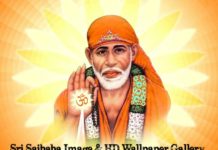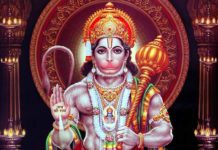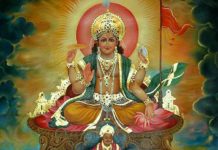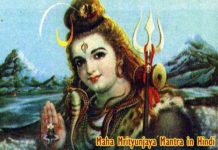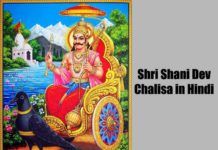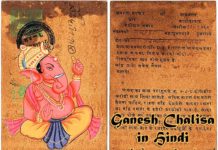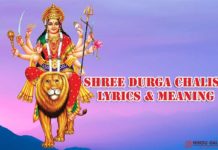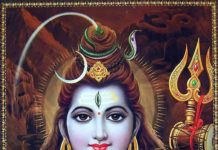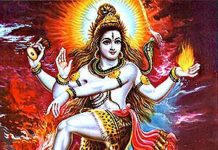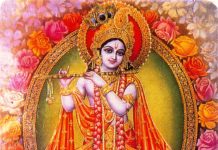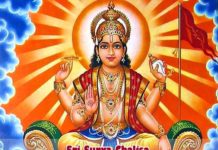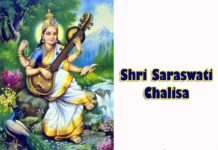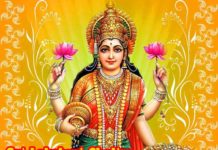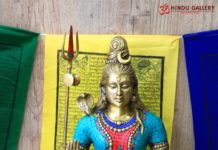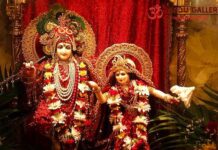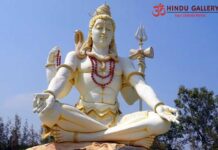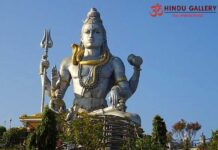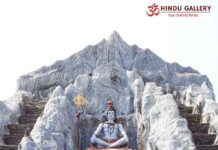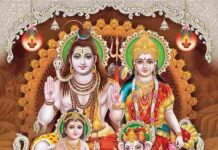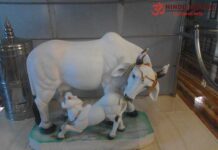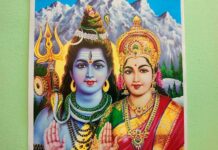Sri Narasimha Dwadashi Vrat is ascribed to Sri Narasimha Swamy, the fourth incarnation of Sri Maha Vishnu.
Sri Narasimha Dwadashi occurs on the twelfth day from the Amavasya (Shukla Paksha Dwadashi) in Phalguna month as per Amanta and Purnimanta Calendars. It occurs on Thursday, 21st March 2024.
Sri Narasimha Dwadashi occurs on the day next to Amalaki Ekadashi. The exact duration of the Dwadashi Tithi may spill over for two days. The respective regional calendar has to be referred for ascertaining the Dwadashi day.
Sri Narasimha Dwdashi day is believed to be the day of incarnation of Sri Narasimha Swamy. However, there is also another belief that only Sri Narasimha Jayanthi which occurs on the Swathi Star of Vaishaka month is the day of incarnation.
As Sri Narasimha Dwadashi day is observed as the Vrat as prayer to Sri Narasimha Swamy, it is appropriate to dwell on the incarnation of Sri Maha Vishnu as Sri Narasimha.
Sri Narasimha Avatar
Sri Narasimha avatar is the fourth incarnation of Bhagwan Sri Maha Vishnu. Unlike the other incarnations, Sri Narasimha avatar had happened for a singular objective only, i.e the killing of Hiranyakasipu, the demon.
As per Agni Puran, the emergence of Sri Narasimha is explained as mentioned hereunder.
Hiranyakasipu
Hiranyaksha and Hiranyakasipu, the asuras were brothers. They had indulged in lots of misdeeds. Based on the pleas made by the Devas, Sri Maha Vishnu had killed Hiranyaksha.
His brother Hiranyakasipu vowed to kill Vishnu. He had chucked out the Devas from the Devaloka and imprisoned them.
Hiranyakasipu did not recognize the fact that Sri Maha Vishnu was the God and that He was omnipresent. He had very high opinions on his prowess. Based on this assumption, he was torturing others.
He expected that only he should be worshipped and not Sri Maha Vishnu. He was tormenting all the Vishnu bhakts.
His boons
Hiranyakasipu was head strong because he had been granted boons by Sri Brahma that he could not be killed
-either by human or by animal;
-either on land or on water or in the sky;
-either in the day or in the night; and
-he could not be killed by any weapon either.
Prahalada
Hiranyakasipu’s son Prahlada was an ardent devotee of Sri Maha Vishnu even when he was in the womb of his mother. His father tried various ways to change his son’s stand. He could not succeed. He tortured his son in various ways. Yet, Prahlada came out unscathed. He never deviated from his devotion to Sri Maha Vishnu.
Prahalada’s belief
Prahlada sincerely believed that Sri Maha Vishnu is omnipresent. One day, Hirnayakasipu asked his son as to how he had managed to escape from all his attempts to kill. Prahalada replied that only Sri Maha Vishnu had saved him in all the occasions.
This made Hiranyakasipu very furious. He asked him whether Prahalada can prove the presence of Sri Maha Vishnu anywhere. Prahalada accepted his father’s challenge.
Emergence of Sri Narasimha
Hiranyakasipu pointed at a pillar and asked whether Sri Maha Vishnu existed there. Prahalada accented.
Hiranyakasipu took a gada and knocked on the pillar. From the pillar, Sri Narasimha Swamy emerged.
It was an evening time which was neither day nor night. He had the appearance of mix of human and animal, i.e lion head and human body. He killed Hiranyakasipu using only his nails. Hiranyakasipu died on the laps of Sri Narasimha.
Ahobilam
The pillar of emergence of Sri Narasimha Avatar is called Ugra Stamba.
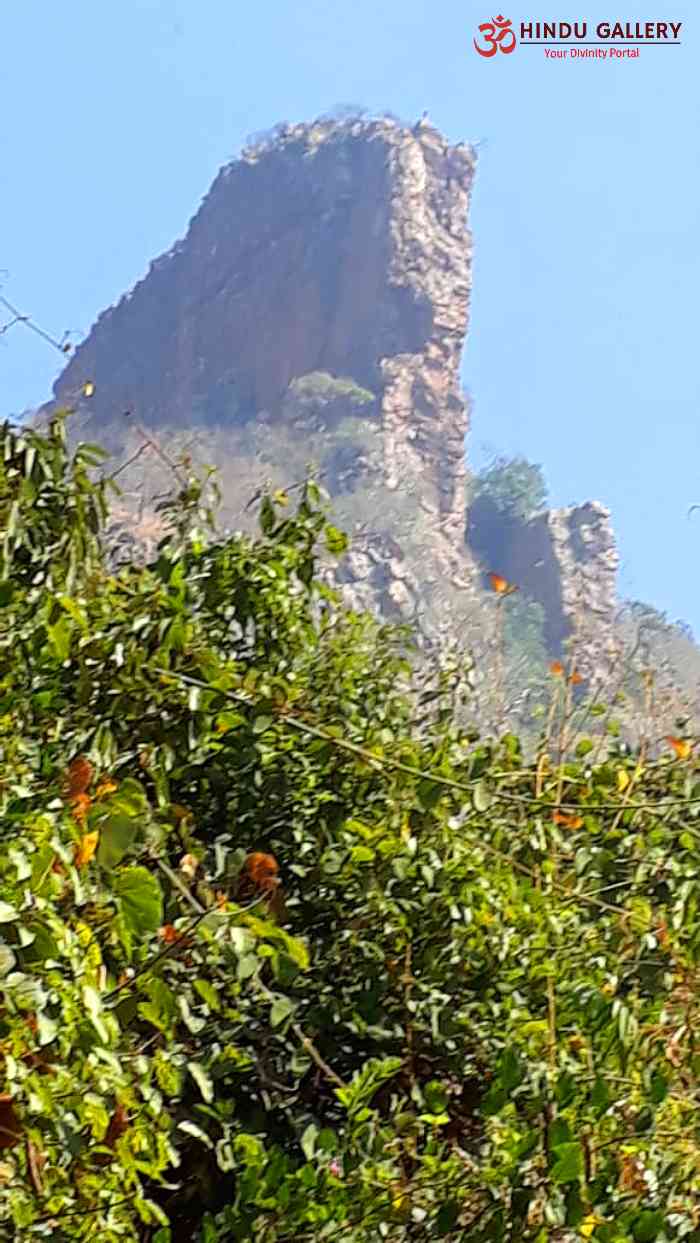
It is situated at Sri Ahobilam at Cuddapah district of Andhra Pradesh.
Sri Narasimha Swamy
Though Sri Narasimha Swamy appears ferocious, He had made an appearance just because a child had believed in Him. He wanted to make the belief of the child come true.
Rituals
The rituals are similar to Ekadashi Vrats. Special prayers pertaining to Sri Narasimha Swamy are recited. Fasting is observed.
Sri Narasimha Slokas
Sri Narasimha Gayathri
Sri Narasimha Mahamantra
Runa Vimochana Sri Narasimha Stotram
Sri Narasimha Prapatti
Sri Mantra Rajapada Stotram
Sri Lakshmi Narasimha Ashtothram
Sri Narasimha Pancharathnam
Sri Narasimha Ashtakam
Sri Narasimha Kavacham
Sri Lakshmi Narasimha Karavalambam
Apart from the above, there are innumerable Slokam / Stotram on Sri Narasimha Swamy in almost all Indian languages.
Sri Narasimha Dwadashi Vrat – beliefs and benefits
-all the debts get cleared;
-bestowed with courage and confidence;
-removal of fears; and
-possession of wealth.
Sri Narasimha Temples
Apart from Sri Ahobilam, details are provided with respect to the following Sri Narasimha Temples in this web-site.
Three Narasimha Temples Parikkal
Kattazhagiya Singar Koil
Singa Perumal Koil
Vedagiri Narasimha Temple
Penchala Kona Narasimha Temple
Sri Govinda Dwadashi
The day is also observed as Sri Govinda Dwadashi.
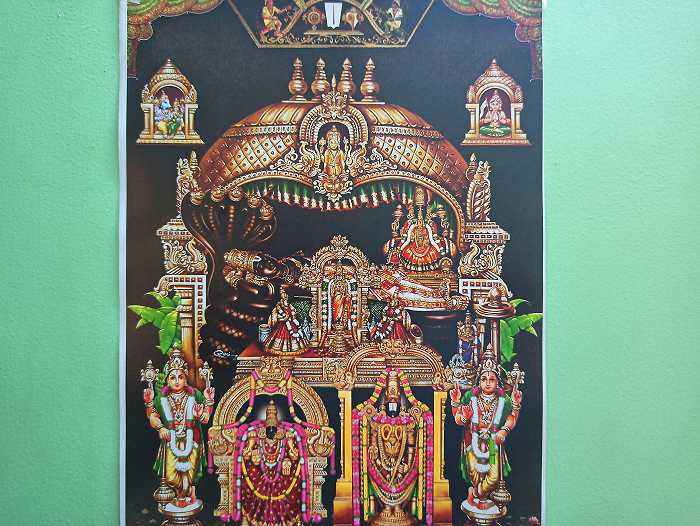
Sri Maha Vishnu is prayed in the form of either Sri Narayana or Sri Pundarikaksha.
The Vrat rituals and benefits are similar to Ekadashi Vrats.
Om Namo Narayanaya Namaha
Om Namo Bhagavathe Vasudevaya


